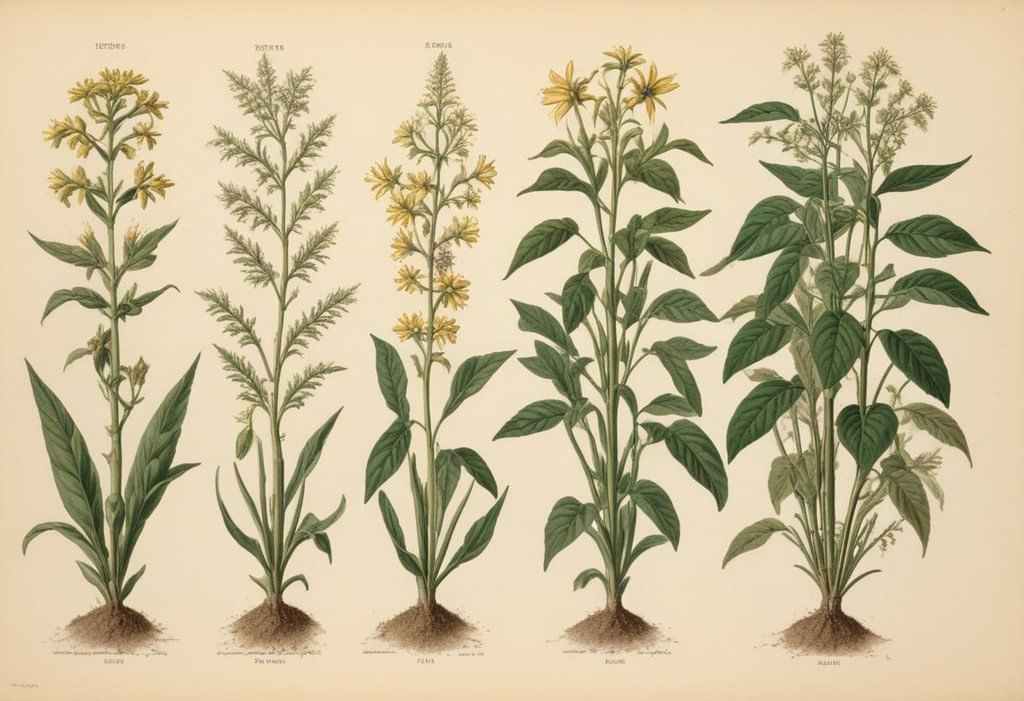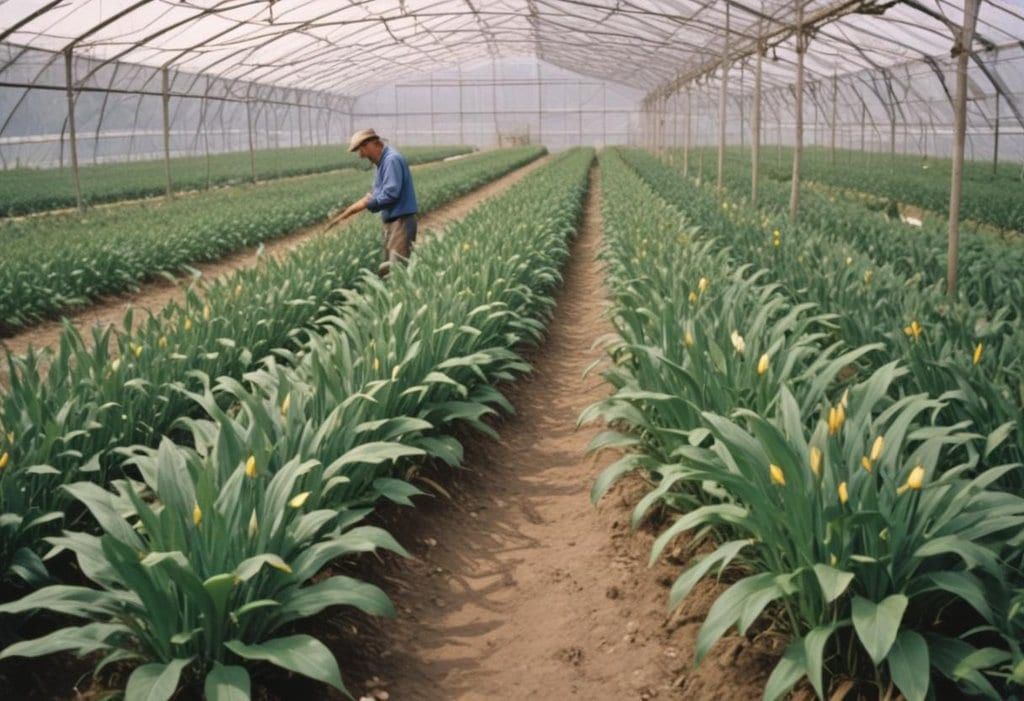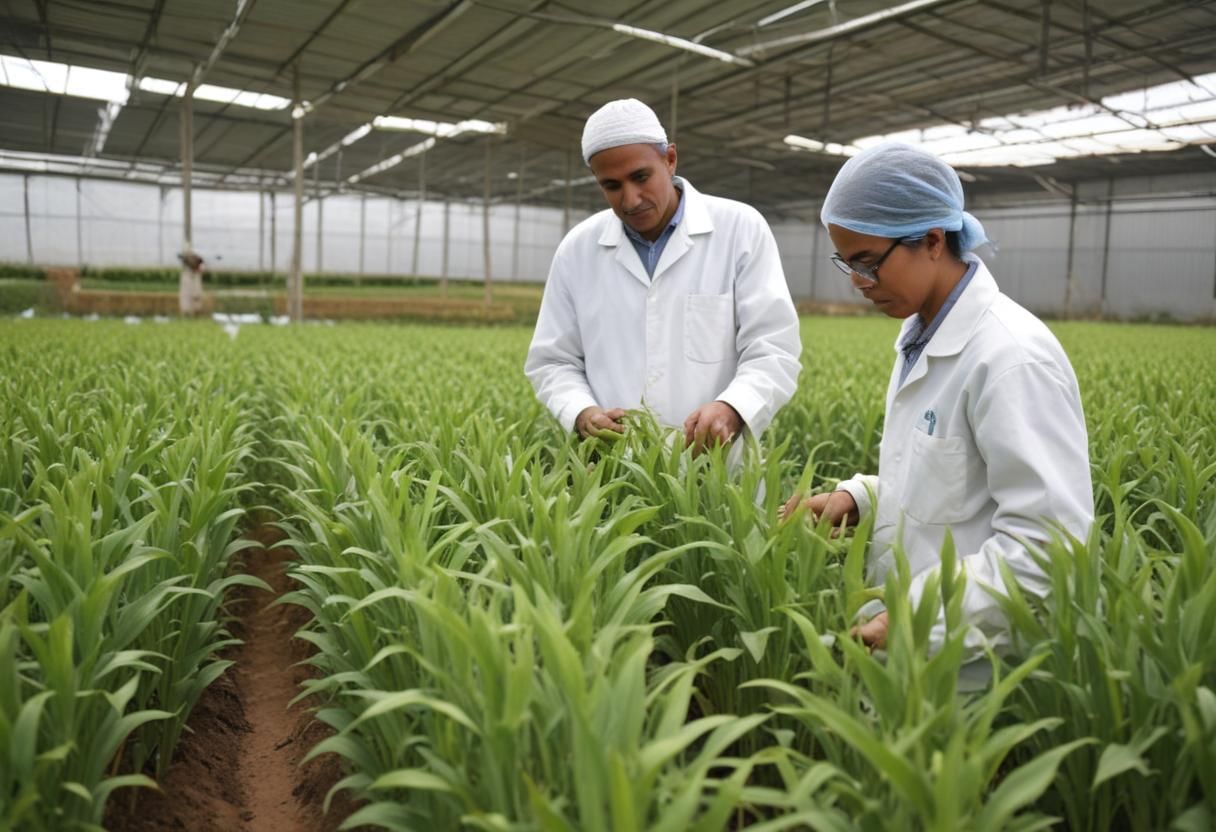Plant Breeding | Agriculture Optional for UPSC PDF Download
| Table of contents |

|
| History of Plant Breeding |

|
| Importance of Plant Breeding |

|
| The Process of Plant Breeding |

|
| Plant Breeding in Agriculture |

|
- Plant breeding is both an art and a science that involves altering plant genetics for the betterment of humanity.
- There are various methods to carry out plant breeding, starting from selecting plants with desired traits to utilizing advanced molecular techniques.
- The practice of plant breeding has a long history, dating back thousands of years to the early stages of human civilization.
- Today, plant breeding is a global practice undertaken by a diverse range of individuals, including gardeners, farmers, and professional plant breeders working for different organizations like government institutions, universities, and research centers.
- Organizations such as international development agencies emphasize the significance of developing new crop varieties to ensure food security. These new varieties should be high-yielding, resistant to pests and diseases, drought-tolerant, and suited to various environmental conditions.

History of Plant Breeding
- The practice of plant breeding dates back to the early days of human civilization when individuals began selecting and cultivating superior plants for their needs.
- During this period, plant breeding was solely based on human expertise and was considered more of an art than a science.
- It was only after the discovery of plant sexuality and Gregor Mendel's laws of inheritance that genetic principles began to play a role in the development and selection of superior plants.
- This marked the transformation of plant breeding into both an art and a science.
- The history of plant breeding is typically divided into two distinct phases: classical plant breeding and modern plant breeding.
- Each of these phases is characterized by specific discoveries, concepts, breeding techniques, resulting products, and significant achievements.
Below, we provide a concise overview of these two phases of plant breeding:
Classical Plant Breeding [1900-1980]
Classical plant breeding had its beginnings following the independent rediscovery of Mendel's findings in 1900 by three scientists: de Vries in Holland, Correns in Germany, and Tschermak in Austria. It involved the deliberate crossbreeding of closely or distantly related plants to create new crop varieties or lines with desirable traits. The process aimed to introduce specific genes or traits from one plant variety into a new genetic background.
For example, a pea variety resistant to mildew might be crossed with a highly productive yet susceptible pea variety.

Concepts Developed:
- Various scientists contributed to the development of essential concepts in plant breeding.
- Principles related to inheritance, progeny selection, individual plant selection, pureline selection, dominance hypothesis, over-dominance hypothesis, recurrent selection, backcrossing, bulk and pedigree methods, single seed descent, floret hypothesis, multiple factor hypothesis, self-incompatibility, male sterility, diallel selective mating, biparental mating, vertical and horizontal resistance, ideotype breeding, and more were developed.
Breeding Techniques Used:
- Classical breeding primarily relied on natural recombination between chromosomes to create genetic diversity.
- In some cases, plant breeders employed in-vitro techniques such as protoplast fusion, embryo rescue, or mutagenesis to generate diversity and develop hybrid plants that would not occur naturally.
- Initially, methods like plant introduction, mass selection, and progeny selection were used.
- Later, techniques like inter-varietal hybridization, interspecific hybridization, intergeneric hybridization, and mutation breeding were employed as needed to achieve specific breeding goals.
Developed Products:
- Initially, classical plant breeding yielded products such as landraces, mass-selected varieties, and exotic varieties.
- Subsequently, it led to the development of semi-dwarf varieties in wheat and rice, as well as the creation of hybrids in crops like maize, pearl millet, sorghum, cotton, pigeonpea, rice, wheat, and various vegetable crops.
Major Achievements:
- Classical plant breeding made significant contributions, notably the development of semi-dwarf wheat and rice varieties, which played a pivotal role in the Green Revolution.
- Additionally, it led to the creation of productive hybrid varieties in pearl millet, sorghum, cotton, pigeonpea, rice, wheat, and several vegetable crops.
Modern Plant Breeding [1980 onwards]
Modern plant breeding commenced around 1980 with the integration of agricultural biotechnology into crop improvement efforts. It leverages molecular biology techniques to either select or insert desirable traits into plants, including genetic modification. The advanced tools and knowledge of molecular biology have transformed classical plant breeding into molecular plant breeding. Here is a concise overview of modern plant breeding, focusing on discoveries and concepts, breeding techniques, products, and notable achievements.

Discoveries/Concepts Developed:
- Recent advancements have led to the emergence of key concepts in plant breeding. Notable concepts include transgenic breeding, molecular plant breeding, terminator technology, traitor technology, organic plant breeding, and participatory plant breeding.
- It's important to note that terminator and traitor technologies have not been approved for use.
- These concepts are now widely applied to develop new crop varieties tailored to specific breeding goals.
Breeding Techniques Used:
- Modern plant breeding incorporates a range of crop improvement techniques to expedite traditional breeding methods. These techniques encompass genetic modification, marker-assisted selection, somatic hybridization, and plant tissue culture methods, among others.
Products Developed:
- The fruits of modern plant breeding efforts include transgenic varieties in several crops like rapeseed and mustard, potato, tobacco, tomato, soybean, sugar beet, Lucerne, and hybrids in maize and cotton.
- Furthermore, organic varieties are in development for specific vegetable crops.
Major Achievements:
- One of the most significant achievements of modern plant breeding is the development of transgenic varieties in various crops, facilitated by the gene revolution and the utilization of agricultural biotechnology.
- This revolution has led to a substantial increase in the productivity of different field crops, representing a significant leap forward.
Importance of Plant Breeding
- Plant breeding holds great importance, particularly in the aftermath of the Green Revolution, which ushered in new crop-yielding technologies and advanced the plant breeding process.
- The primary purpose of plant breeding is the enhancement of specific characteristics in plants. It serves to instill resilience in plants against adverse environmental conditions, such as extreme heat, floods, or drought.
- Additionally, plant breeding contributes to the refinement of seed quality, which, in turn, has a positive impact on populations worldwide. Taking a global perspective, the overarching significance of plant breeding lies in its capacity to address the growing demands of an increasing global population.
The Process of Plant Breeding
The plant breeding process is characterized by a series of meticulous steps, requiring patience and precision.

These steps include:
- Collecting Desired Varieties: To initiate successful plant breeding, it is essential to gather various high-yielding plant varieties. This process, known as germplasm collection, involves collecting different alleles for all the genes within the specific plant species.
- Parent Selection and Evaluation: High-yielding varieties are carefully selected as parent plants. The selection process aims to ensure the development of pure lines, which are progenies resulting from self-pollinating homozygous plants.
- Hybridization of Parent Plants: The two chosen high-yielding parent varieties are crossbred through hybridization. This involves transferring pollen grains from the anther of one high-yielding male plant to the stigma of another high-yielding female plant.
- Selection and Testing of High-Yielding Combinations: Not all hybrids produced in the crossbreeding process meet the desired criteria for high yield. Therefore, a rigorous selection and testing phase is implemented to identify the most suitable hybrids.
- Testing and Release of Approved Hybrids: The selected hybrids that meet the required standards undergo testing in research fields, where optimal crop-growing conditions are maintained. This testing spans at least three growing seasons. If the hybrids pass the testing phase, the high-yielding seeds are preserved and subsequently released during appropriate agricultural seasons.
Plant Breeding in Agriculture
Plant breeding plays a crucial role in agriculture, and its practice has a long history.
There are several significant reasons for engaging in plant breeding:
- Enhancing Yield: The primary objective of plant breeding is to develop high-yielding plant varieties. These varieties are cultivated to withstand adverse environmental conditions like floods, droughts, and other challenges. They are designed to be resilient to harmful bacteria and viruses.
- Improving Water Use Efficiency: Plant breeding efforts also aim to increase the efficiency of water usage in crops.
- Enhancing Nutrient Use Efficiency: High-yielding plants are engineered to optimize the utilization of essential nutrients such as phosphorus and nitrogen.
- Weed Competition: Hybrid plants need to compete effectively in the market, even in the presence of weeds.
- Tolerance to Mechanical Weed Control: These hybrids should also be able to endure mechanical weed control methods.
- Early Maturity: Tolerance to early maturity is a characteristic developed to reduce specific stress factors on the plant.
Conclusion
- By now, we have explored the importance of plant breeding, its origins, and historical development.
- We've also delved into the plant breeding process and its significance in agriculture.
- Given that many countries rely on agriculture as a primary occupation, they strive to optimize their agricultural practices to sustain their livelihoods.
- Any harm to plants can result in financial losses for these farmers.
- Therefore, these methods have been adopted by farmers over an extended period to positively influence their agricultural endeavors and, by extension, people globally.
- Plant breeding can be viewed as a significant contribution from the fields of genetics and molecular biology to the agricultural industry.
- This technology has made a substantial, positive impact worldwide.
|
52 videos|224 docs
|
FAQs on Plant Breeding - Agriculture Optional for UPSC
| 1. What is the history of plant breeding? |  |
| 2. Why is plant breeding important? |  |
| 3. What is the process of plant breeding? |  |
| 4. How is plant breeding used in agriculture? |  |
| 5. What are some common methods used in plant breeding? |  |















